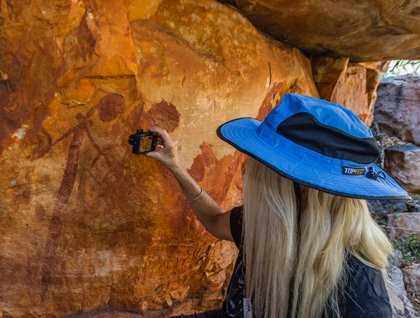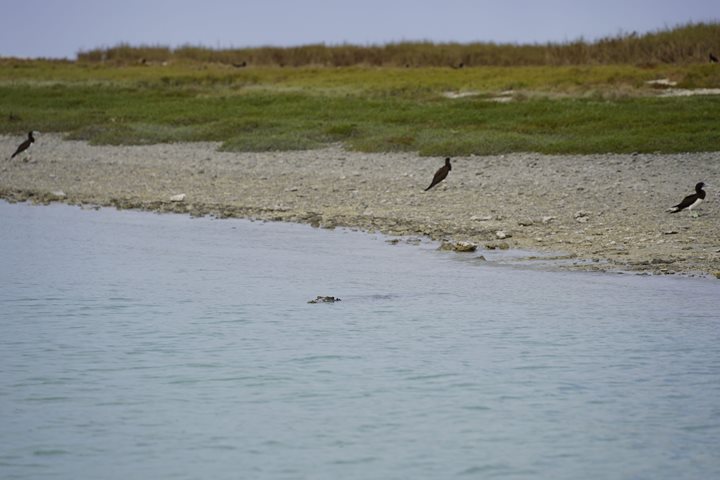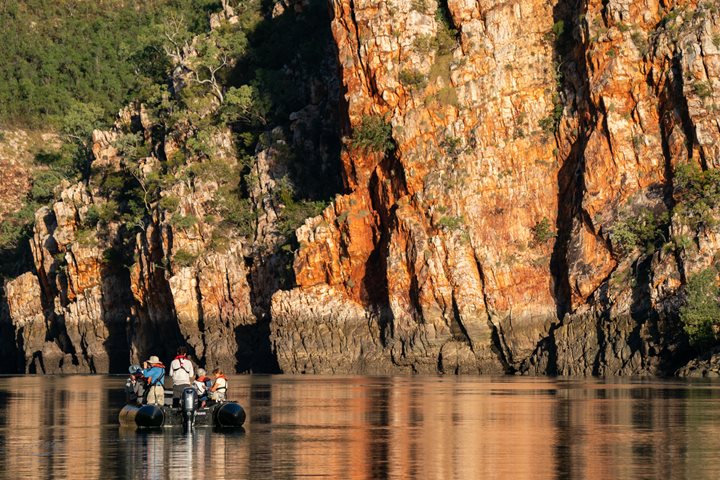The sun rose this morning just as National Geographic Orion anchored off Jar Island. Excitement over our morning destination to see a style of rock art endemic to the Kimberly, called Gwion Gwion, or Bradshaw Art, was the talk around the breakfast tables.
Joseph Bradshaw was the first to record the art type that bears his name when he encountered these figures near the Roe River in 1891. In Aboriginal folklore the Gwion Gwion bird, which we know as the sandstone strike thrush, pecked at the rocks causing its beak to bleed then used it as an instrument to draw the detailed elegant rock art.
Just how old are these rock paintings? The answer has proved to be quite difficult and even controversial. Trying to determine the composition of the original pigments has proved inconclusive, and it seems that the original paint has been absorbed into the rock itself, and now seems impervious to the elements. Perhaps a fossilized mud wasp’s nest is our best clue to determining the age of the Gwion Gwion rock art. In 1996 Grahame Walsh discovered just such a nest that was removed by scientists. It was analyzed using a new technique of dating and it was determined that the nest was at least 17,000 years old. Since the nest was on top of the painting, this gives us a minimum age for the artwork below, and some experts are willing to double that figure and more. In the end we do not really know just how old these rock paintings are.
Irrespective of age, the rock art captured our imaginations and camera lenses.
Our afternoon journey into history revolved around a more recent artifact. Here on the Anjo Peninsula the remains of a Douglas C-53 Skytrouper airplane is a reminder that by late February 1942 Japanese forces were steadily moving southward. Making a navigational error from its origination airport in Perth, the pilot of this particular C-53 was forced to crash land the plane here at this remote spot. After three days with very little food and water, all six of the crew were rescued by Qantas Empire Flying Boats on March 1, 1942.
One of the delights of the afternoon came in the form of a tiny little fish called a mudskipper. These amphibious oddities of the fish world have developed the ability to literally leave the water and “skip” around on wet mud. They have large bulbous eyes and their generic name Periopthalmus means “around eyes” in Greek, refers to their large field of view. Some mudskipper can even climb trees and rocks. With the low tide, literally hundreds of these small fish were out skipping in the mud or peering at us from their little mud burrows, much to our amusement.









